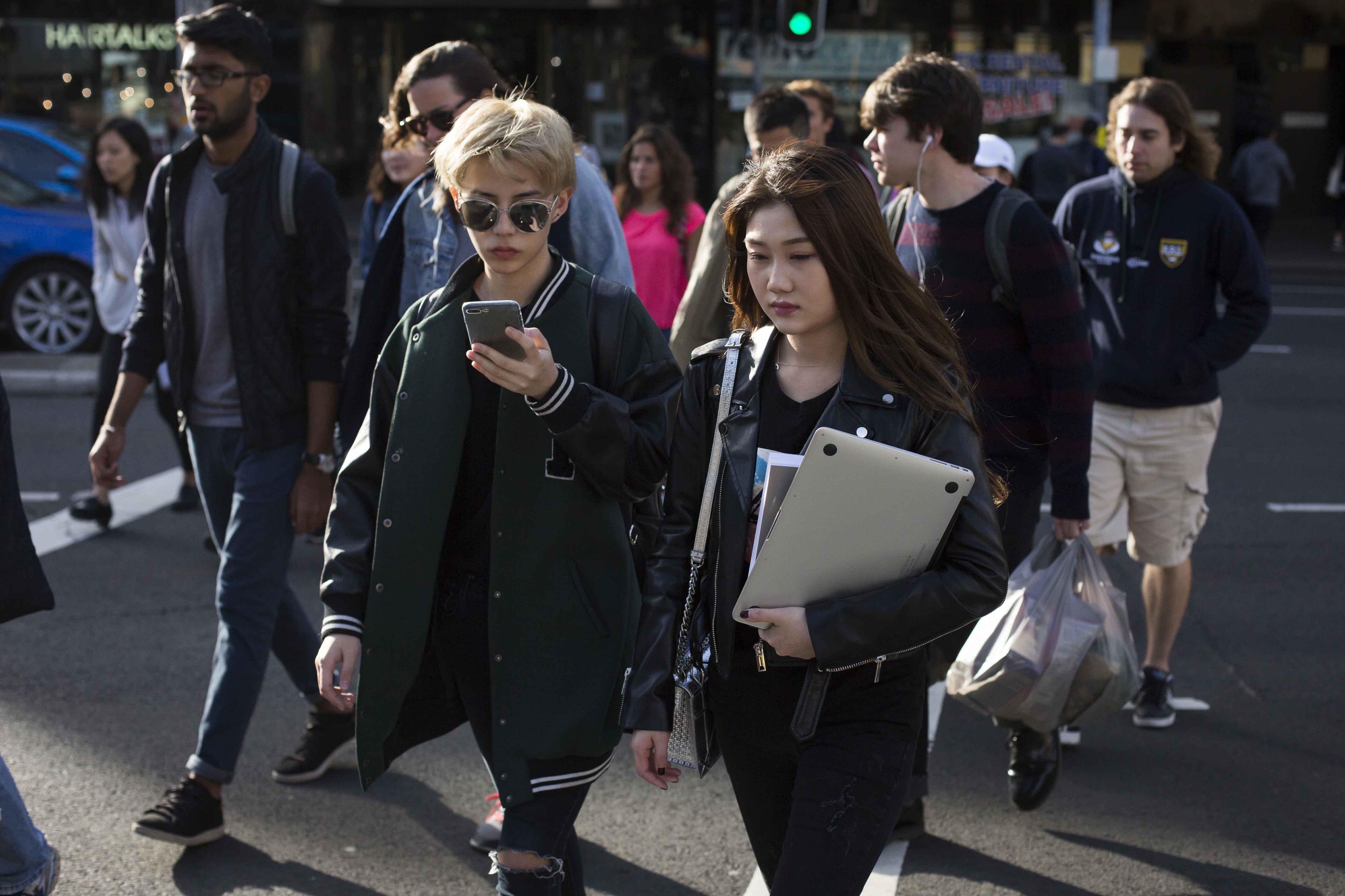Picture the scene: you’re texting away, screaming internally at AutoCorrect’s attempts to sanitize your language (why would I be writing “duck me”?! duck YOU, autocorrect!), and then somebody tries to talk to you in the real world.
It doesn’t matter what they’re saying or asking: to you, they’re interrupting your conversation. To them, you’re ignoring them for someone who’s not even there. Bloody rude!
But as long as people have smartphones in their pockets, this is just going to keep happening. Digital screens can take our attention far away from where we are…while leaving our body firmly on the ground.
Of course, this isn’t exactly new—since the 1930s, televisions have been transporting our thoughts across seas and through time. What’s different in the digital age is that these digital screens are portable and interactive. They’re also everywhere you look.
That is, if you’re looking around you, and not down at your mobile device.
A lot of us have our eyes, hands, and minds fixed on our phones instead of watching where we’re going. ‘Weapons of mass distraction’ is what Silicon Valley technology forecaster Paul Saffo calls these smartphones and their users.
It sounds melodramatic, but you’d be surprised at how many people annoy others and endanger themselves with their unrelenting addiction to their screens. Finding examples is easy enough.
In Newtown’s King Street, a woman nearly walks right into peak traffic. This distracted damsel is saved from an accident by a fellow pedestrian, who blocks her path to stop her. Too bad his sharp eyes and fast reflexes go unrewarded: the lady doesn’t even know what she nearly missed and swears at him instead.
Elsewhere, in North Sydney, another woman in her mid-thirties steps off the curb while looking at her phone. She is immediately clipped by a car and falls into the gutter. “It was awful to witness,” my friend says, “and I’m sure it was awful for her to experience.”
Even if you’ve never seen such cringe-worthy encounters, you can easily find security camera footage online of people falling into fountains and uncovered manholes that they were all too busy texting to see — just to live vicariously and learn the pitfalls of walking and texting, of course.
For actual schadenfreude, check out Twitter, where people announce their strategies for dealing with such distracted pedestrians (“… walking right into them with as much force as I can create”, says @lalifealert).
In all seriousness, there is too much dumb behavior around smartphone usage.
Walking while texting has become such a phenomenon, that there are more than a few new-fangled names for these pedestrian texters. Pick your favorite from
‘Pedtextrian’ puts the ‘text’ in the ‘pedestrian’. You can guess the meaning of ‘wexting’, a distant cousin of sexting (something usually and hopefully done in private, instead of on public pavements). The last nickname, smombies, is what exasperated Germans call smartphone-zombies.
Despite being tricky to spit out, smombies might be the most apt term since we aren’t necessarily texting when we’re tapping away on our smartphones. We could be checking for the chance of rain or playing a game, filtering for café recommendations, and then getting GPS directions to that café…you get the idea.
There is so much that we use our smartphones for, and we’re simply unwilling to give that up even when we’re on the move. While that’s no excuse for letting it bewitch us, it is one of the too-many-for-this-article reasons why we can’t easily take our eyes off of our devices.
When we spend way more time looking at our phones instead of what’s around us, we don’t even see how silly we look.
We hunch to dip our head toward our phones, straining our spine with ‘text neck’. This burden is a weighty one, say researchers, since a neck that cranes forward and downward at a 60-degree angle creates 30kg of pressure for itself. That’s like supporting a full-grown wallaby around your neck as you text.
You probably don’t need another study to convince you that we walk differently when we’re walking and texting, but a research team from the University of Queensland went and did it anyway, in 2014.
They found that we ‘lock’ our arms, head, and chest when we text and walk, so that we can read off a less shaky phone screen. However, this adaptation leaves us less likely to keep to a straight line, and more likely to lose our balance.
In further detail, a 2015 study by University of Bath researchers reveals how our body compensates for our mind being elsewhere. We try to walk more cautiously, and end up swerving a lot.
We shorten the length of our steps and reduce the frequency of our steps. We lift our knees higher when clearing obstacles, and we increase the time that both of our two feet are on the ground at the same time (this is called double phase support).
All this science, to back up what you already might’ve known.
What you might not have heard, is that over 270,000 pedestrians globally lose their lives on roads every year.
Smartphone usage while walking has been shown to play a part in the overall increase in pedestrian injuries. From collisions with other pedestrians, to sprains, nosebleeds, dislocations, and even concussions, the list is only limited to the infinite number of things in your surroundings.
Cities around the world have seen enough and are calling out our addiction to us.
A 2014 experiment in Washington DC was reproduced in China’s Chongqing, where a 30 metre stretch of stone-cobbled pavement was split into an anti-cellphone lane and a cellphone lane. Later, Antwerp in Belgium also introduces ‘text walking lanes’ in 2015, to save pedtextrians from themselves.
While all these initiatives were sponsored by private companies—National Geographic, Meixin, and Mlab—they marked the start of other permanent efforts by urban administrators.
Augsburg, a university town in Germany, has designed traffic lights that they’re hoping the most hardcore texter cannot miss: by putting them in the ground. These LED lights, installed in 2016, work hard at flashing red to those who walk with their heads down. They were installed in the hopes of preventing further injury and death, after a 15-year old girl walked into an oncoming train and died. Police reports reveal that she had been looking at her phone with her headphones on.
Closer to home, the NSW Government has implemented a $250,000 six-month trial for similar ‘pedtextrian’ traffic lights. They’ve been blinking red and green from under our feet at the intersection of Hay and Dixon Street, as well as at Pitt and Goulburn, since March 2017. NSW Roads Minister Duncan Gay told Fairfax Media that he “didn’t want to install ‘hand-holding’ technology like in-ground lights because people can’t manage to take their eyes off their phone when crossing a road — but if these lights could save just one life — I’ll do it.”
If it is too much to ask that pedestrians reserve their undivided attention for where their feet are going, then urban design must cater to this emerging context of distraction.
To this end, researchers at University of Sydney propose that we focus on the true needs and behaviors of pedestrians. Is what we need more countdown timers in Sydney CBD? Or texting lanes, and traffic lights at our feet?
While cities cannot change the fact that some of us walk with our head in the digital cloud, they are beginning to do what they can, to keep your body on its legs.
If they don’t, who will?






